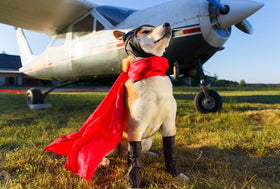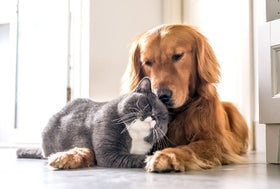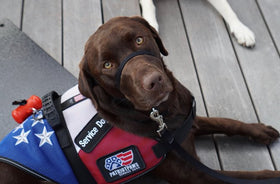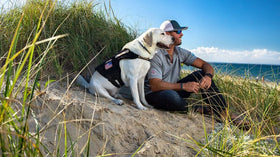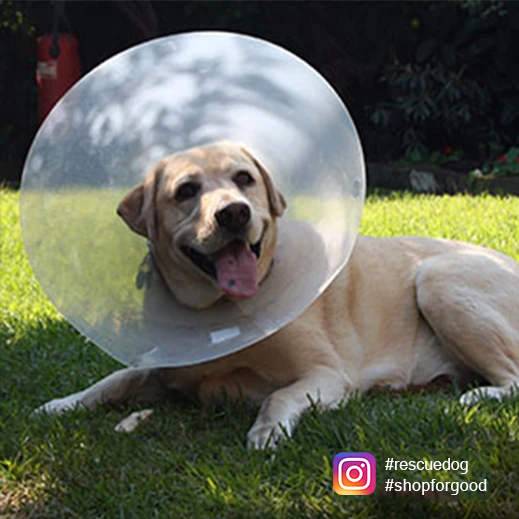
The “Cone of Shame” - A Guide to E-Collars
At some point in their life, your furry friend may need to experience an Elizabethan collar, also called an E-collar or E-cone - but far more commonly known as the “cone of shame.” Why does it have such a bad reputation? Most pets greatly dislike their E-collar at first, and behave like they’re being punished. However, some pets simply get on with their lives during the short time they are forced to wear one. Either way, follow your veterinarian’s instruction about its use.
Your buddy may receive this awkward, hard plastic “gift” to prevent them from turning their bodies to lick or chew on an injury or recent surgery. Allowing your pet access to the affected area could lead to infection, pulled stitches, or re-injury.
As such, your veterinarian will likely insist that the E-collar remain on your pet for a period of time longer than you or your pet would prefer. Stay the course, and remain vigilant: our pets are notorious for escaping their “cone of shame.” Make certain that the E-collar is properly fitted; short enough to allow your pet to eat and drink, but large enough to prevent them from reaching the affected area. You can also take the E-collar off for short periods to allow your buddy to eat and drink more comfortably, but give them your full attention while the E-collar is off, and put it back on immediately after.

There are alternatives to E-collars, such as pillow collars, padded rings, and cloth cones, but the main concern with most of the available alternatives is that they may not prevent the animal reaching the affected area as well as a sturdy plastic cone. Still, your results may vary depending on the need; speak to your vet about your options.
Here are some tips to help your pet adjust to wearing the “cone of shame”:
HELP THEM FIND THEIR WAY
Your pet’s peripheral vision is reduced, and their hearing is a bit distorted, so wearing the cone can be disorienting. Also, the cone is much wider than your pet’s head, making navigation more difficult. So be patient with your buddy’s clumsiness, and help them get around.
LEAVE THE COLLAR ON
With rare exceptions (eating and drinking while being monitored), the E-collar needs to remain on at all times. Your pet’s health is at stake. Hopefully, your pet will become accustomed to it in short order, and consistency helps.
CAN MY PET EAT AND DRINK?
Some pets will be able to reach their food bowls without any issue, and others will not. Watch them carefully when they make their first attempt or two… you may find it necessary to remove the cone for meals. Watch them carefully, and replace the cone right away when they’re finished.
EMOTIONS ARE HARD
Try not to feel guilty… it’s for their own good. Also, try not to laugh when they look at you with shame.
Within a day or two, your pet will hopefully adapt to their E-collar. If they seem to truly despise their collar after an appropriate adjustment period, you may want to speak with your veterinarian about alternatives. And chin up! It’s be over soon, for both you and your buddy.

